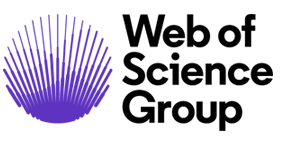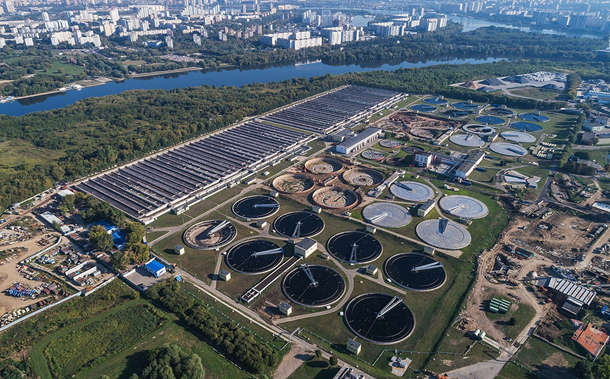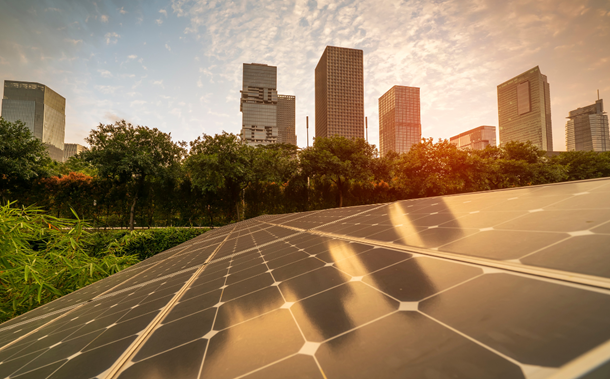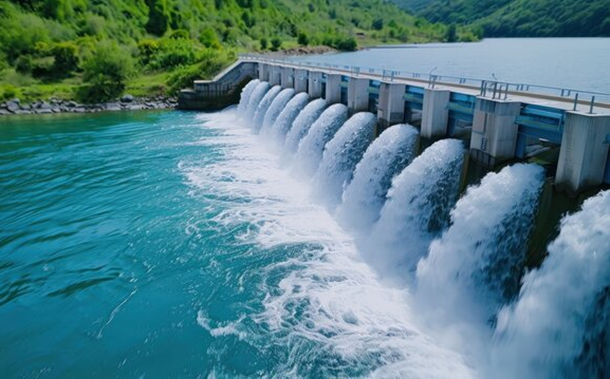Adsorption of Heavy Metals from Contaminated Water using Leachate Modular Tower
Downloads
Doi:10.28991/CEJ-2023-09-06-017
Full Text:PDF
Downloads
[2] WHO. (2008). Guidelines for drinking-water quality: incorporating 1st and 2nd addenda (3rd Ed.). World Health Organization (WHO), Geneva, Switzerland. Available online: https://apps.who.int/iris/bitstream/handle/10665/204411/9789241547611_ eng.pdf?sequence=1&isAllowed=y (accessed on April 2023).
[3] Bind, A., Kushwaha, A., Devi, G., Goswami, S., Sen, B., & Prakash, V. (2019). Biosorption valorization of floating and submerged macrophytes for heavy-metal removal in a multi-component system. Applied Water Science, 9(4), 95. doi:10.1007/s13201-019-0976-y.
[4] Kumar, M., Goswami, L., Singh, A. K., & Sikandar, M. (2019). Valorization of coal fired-fly ash for potential heavy metal removal from the single and multi-contaminated system. Heliyon, 5(10). doi:10.1016/j.heliyon.2019.e02562.
[5] Kumar, S., Islam, A. R. M. T., Hasanuzzaman, M., Salam, R., Khan, R., & Islam, M. S. (2021). Preliminary assessment of heavy metals in surface water and sediment in Nakuvadra-Rakiraki River, Fiji using indexical and chemometric approaches. Journal of Environmental Management, 298. doi:10.1016/j.jenvman.2021.113517.
[6] Fu, Z. J., Jiang, S. K., Chao, X. Y., Zhang, C. X., Shi, Q., Wang, Z. Y., Liu, M. L., & Sun, S. P. (2022). Removing miscellaneous heavy metals by all-in-one ion exchange-nanofiltration membrane. Water Research, 222, 118888. doi:10.1016/j.watres.2022.118888.
[7] Toropitsyna, J., Jelinek, L., Wilson, R., & Paidar, M. (2023). Selective Removal of Transient Metal Ions from Acid Mine Drainage and the Possibility of Metallic Copper Recovery with Electrolysis. Solvent Extraction and Ion Exchange, 41(2), 176–204. doi:10.1080/07366299.2023.2181090.
[8] Sun, Y., Wang, Z., Chen, J., Fang, Y., Wang, L., Pan, W., Zou, B., Qian, G., & Xu, Y. (2022). Phosphorus Recovery from Incinerated Sewage Sludge Ash Using Electrodialysis Coupled with Plant Extractant Enhancement Technology. SSRN Electronic Journal. doi:10.2139/ssrn.4293133.
[9] Khan, A. U., Khan, A. N., Waris, A., Ilyas, M., & Zamel, D. (2022). Phytoremediation of pollutants from wastewater: A concise review. Open Life Sciences, 17(1), 488–496. doi:10.1515/biol-2022-0056.
[10] Li, Q., Liu, D., Chen, C., Shao, Z., Wang, H., Liu, J., Zhang, Q., & Gadd, G. M. (2019). Experimental and geochemical simulation of nickel carbonate mineral precipitation by carbonate-laden Ureolytic fungal culture supernatants. Environmental Science: Nano, 6(6), 1866–1875. doi:10.1039/c9en00385a.
[11] Rajendran, S., Priya, A. K., Senthil Kumar, P., Hoang, T. K. A., Sekar, K., Chong, K. Y., Khoo, K. S., Ng, H. S., & Show, P. L. (2022). A critical and recent developments on adsorption technique for removal of heavy metals from wastewater-A review. Chemosphere, 303(N), 0045–6535,. doi:10.1016/j.chemosphere.2022.135146.
[12] Lejwoda, P., Ššwinder, H., & Thomas, M. (2023). Evaluation of the stability of heavy metal-containing sediments obtained in the wastewater treatment processes with the use of various precipitating agents. Environmental Monitoring and Assessment, 195(4), 442. doi:10.1007/s10661-023-11036-9.
[13] Li, Y., Yu, H., Liu, L., & Yu, H. (2021). Application of co-pyrolysis biochar for the adsorption and immobilization of heavy metals in contaminated environmental substrates. Journal of Hazardous Materials, 420(126655). doi:10.1016/j.jhazmat.2021.126655.
[14] Kushwaha, A., Rani, R., & Patra, J. K. (2020). Adsorption kinetics and molecular interactions of lead [Pb(II)] with natural clay and humic acid. International Journal of Environmental Science and Technology, 17(3), 1325–1336. doi:10.1007/s13762-019-02411-6.
[15] Gupta, A., Sharma, V., Sharma, K., Kumar, V., Choudhary, S., Mankotia, P., Kumar, B., Mishra, H., Moulick, A., Ekielski, A., & Mishra, P. K. (2021). A review of adsorbents for heavy metal decontamination: Growing approach to wastewater treatment. Materials, 14(16). doi:10.3390/ma14164702.
[16] Maleki, A., Mohammad, M., Emdadi, Z., Asim, N., Azizi, M., & Safaei, J. (2020). Adsorbent materials based on a geopolymer paste for dye removal from aqueous solutions. Arabian Journal of Chemistry, 13(1), 3017–3025. doi:10.1016/j.arabjc.2018.08.011.
[17] Luhar, I., Luhar, S., Abdullah, M. M. A. B., Razak, R. A., Vizureanu, P., Sandu, A. V., & Matasaru, P. D. (2021). A state-of-the-art review on innovative geopolymer composites designed for water and wastewater treatment. Materials, 14(23), 7456. doi:10.3390/ma14237456.
[18] Aigbe, U. O., & Osibote, O. A. (2020). A review of hexavalent chromium removal from aqueous solutions by sorption technique using nanomaterials. Journal of Environmental Chemical Engineering, 8(6), 104503. doi:10.1016/j.jece.2020.104503.
[19] Bandar, S., Anbia, M., & Salehi, S. (2021). Comparison of MnO2 modified and unmodified magnetic Fe3O4 nanoparticle adsorbents and their potential to remove iron and manganese from aqueous media. Journal of Alloys and Compounds, 851. doi:10.1016/j.jallcom.2020.156822.
[20] Nworie, F. S., Mgbemena, N., Ike-Amadi, A. C., & Ebunoha, J. (2022). Functionalized Biochars for Enhanced Removal of Heavy Metals from Aqueous Solutions: Mechanism and Future Industrial Prospects. Journal of Human, Earth, and Future, 3(3), 377-395. doi:10.28991/HEF-2022-03-03-09.
[21] Xiao, G., Wang, Y., Xu, S., Li, P., Yang, C., Jin, Y., Sun, Q., & Su, H. (2019). Superior adsorption performance of graphitic carbon nitride nanosheets for both cationic and anionic heavy metals from wastewater. Chinese Journal of Chemical Engineering, 27(2), 305–313. doi:10.1016/j.cjche.2018.09.028.
[22] Ibrahim, R. K., Hayyan, M., AlSaadi, M. A., Hayyan, A., & Ibrahim, S. (2016). Environmental application of nanotechnology: air, soil, and water. Environmental Science and Pollution Research, 23(14), 13754–13788. doi:10.1007/s11356-016-6457-z.
[23] Mathur, J., Goswami, P., Gupta, A., Srivastava, S., Minkina, T., Shan, S., & D. Rajput, V. (2022). Nanomaterials for Water Remediation: An Efficient Strategy for Prevention of Metal (Loid) Hazard. Water (Switzerland), 14(24), 3998. doi:10.3390/w14243998.
[24] Kumara, G. M. P., & Kawamoto, K. (2019). Applicability of crushed clay brick and municipal solid waste slag as low-cost adsorbents to refine high concentrate Cd (II) and Pb (II) contaminated wastewater. International Journal of Geomate, 17(63), 133–142. doi:10.21660/2019.63.26726.
[25] Nguyen, T. C., Tran, T. D. M., Dao, V. B., Vu, Q. T., Nguyen, T. D., & Thai, H. (2020). Using Modified Fly Ash for Removal of Heavy Metal Ions from Aqueous Solution. Journal of Chemistry, 2020, 11. doi:10.1155/2020/8428473.
[26] Praditia, T., Karlbauer, M., Otte, S., Oladyshkin, S., Butz, M. V., & Nowak, W. (2022). Learning Groundwater Contaminant Diffusion-Sorption Processes with a Finite Volume Neural Network. Water Resources Research, 58(12), 2022 033149. doi:10.1029/2022WR033149.
[27] Ahmadi, M., Hazrati Niari, M., & Kakavandi, B. (2017). Development of maghemite nanoparticles supported on cross-linked chitosan (γ-Fe2O3@CS) as a recoverable mesoporous magnetic composite for effective heavy metals removal. Journal of Molecular Liquids, 248, 184–196. doi:10.1016/j.molliq.2017.10.014.
[28] Akpomie, K. G., Conradie, J., Adegoke, K. A., Oyedotun, K. O., Ighalo, J. O., Amaku, J. F., Olisah, C., Adeola, A. O., & Iwuozor, K. O. (2023). Adsorption mechanism and modeling of radionuclides and heavy metals onto ZnO nanoparticles: a review. Applied Water Science, 13(1). doi:10.1007/s13201-022-01827-9.
[29] ASTM D1140-17. (2017). Standard Test Methods for Determining the Amount of Material Finer than 75-μm (No. 200) Sieve in Soils by Washing, ASTM International, Pennsylvania, United States. doi:10.1520/D1140-17.
[30] IS 2720-24. (1976). Methods of test for soils Part XXIV determination of cation exchange capacity. Bureau of Indian Standards, New Delhi, India.
[31] South African Water Quality Guidelines. (1976). Volume 7: Aquatic Ecosystems. Department of Water Affairs and Forestry (DWARF), Mokopane, South Africa.
[32] ASTM D6276-19. (2019). Standard Test Method for Using pH to Estimate the Soil-Lime Proportion Requirement for Soil Stabilization. ASTM International, Pennsylvania, United Sates. doi:10.1520/D6276-19.
[33] Dubey, R., Bajpai, J., & Bajpai, A. K. (2016). Chitosan-alginate nanoparticles (CANPs) as potential nanosorbent for removal of Hg (II) ions. Environmental Nanotechnology, Monitoring and Management, 6, 32–44. doi:10.1016/j.enmm.2016.06.008.
[34] Chen, C., Liu, H., Chen, T., Chen, D., & Frost, R. L. (2015). An insight into the removal of Pb(II), Cu(II), Co(II), Cd(II), Zn(II), Ag(I), Hg(I), Cr(VI) by Na(I)-montmorillonite and Ca(II)-montmorillonite. Applied Clay Science, 118, 239–247. doi:10.1016/j.clay.2015.09.004.
[35] Zacaroni, L. M., Magriotis, Z. M., Cardoso, M. das G., Santiago, W. D., Mendonça, J. G., Vieira, S. S., & Nelson, D. L. (2015). Natural clay and commercial activated charcoal: Properties and application for the removal of copper from cachaça. Food Control, 47, 536–544. doi:10.1016/j.foodcont.2014.07.035.
[36] Campillo-Cora, C., Conde-Cid, M., Arias-Estévez, M., Fernández-Calviño, D., & Alonso-Vega, F. (2020). Specific adsorption of heavy metals in soils: Individual and competitive experiments. Agronomy, 10(8). doi:10.3390/agronomy10081113.
[37] Ewis, D., Ba-Abbad, M. M., Benamor, A., & El-Naas, M. H. (2022). Adsorption of organic water pollutants by clays and clay minerals composites: A comprehensive review. Applied Clay Science, 229. doi:10.1016/j.clay.2022.106686.
[38] Kolluru, S. S., Agarwal, S., Sireesha, S., Sreedhar, I., & Kale, S. R. (2021). Heavy metal removal from wastewater using nanomaterials-process and engineering aspects. Process Safety and Environmental Protection, 150, 323–355. doi:10.1016/j.psep.2021.04.025.
[39] Ghasemzadeh, G., Momenpour, M., Omidi, F., Hosseini, M. R., Ahani, M., & Barzegari, A. (2014). Applications of nanomaterials in water treatment and environmental remediation. Frontiers of Environmental Science and Engineering, 8(4), 471–482. doi:10.1007/s11783-014-0654-0.
[40] Rajak, A. A. (2022). Emerging technological methods for effective farming by cloud computing and IoT. Emerg. Sci. J., 6(5), 1017-1031. doi:10.28991/ESJ-2022-06-05-07.
[41] Zarime, N. A., Yaacob, W. Z. W., & Jamil, H. (2018). Removal of heavy metals using bentonite supported nano-zero valent iron particles. AIP Conference Proceedings. doi:10.1063/1.5027944.
[42] Sadegh, H., Ali, G. A. M., Gupta, V. K., Makhlouf, A. S. H., Shahryari-ghoshekandi, R., Nadagouda, M. N., Sillanpää, M., & Megiel, E. (2017). The role of nanomaterials as effective adsorbents and their applications in wastewater treatment. Journal of Nanostructure in Chemistry, 7(1), 1–14. doi:10.1007/s40097-017-0219-4.
[43] Sepehri, S., Kanani, E., Abdoli, S., Rajput, V. D., Minkina, T., & Asgari Lajayer, B. (2023). Pb(II) Removal from Aqueous Solutions by Adsorption on Stabilized Zero-Valent Iron Nanoparticles”A Green Approach. Water (Switzerland), 15(2), 222. doi:10.3390/w15020222.
[44] Alipour, A., Zarinabadi, S., Azimi, A., & Mirzaei, M. (2020). Adsorptive removal of Pb(II) ions from aqueous solutions by thiourea-functionalized magnetic ZnO/nanocellulose composite: Optimization by response surface methodology (RSM). International Journal of Biological Macromolecules, 151, 124–135. doi:10.1016/j.ijbiomac.2020.02.109.
[45] Zhang, Y., Zhang, H., Zhang, Z., Liu, C., Sun, C., Zhang, W., & Marhaba, T. (2018). PH Effect on Heavy Metal Release from a Polluted Sediment. Journal of Chemistry, 2018, 7. doi:10.1155/2018/7597640.
[46] Yu, G., Wang, X., Liu, J., Jiang, P., You, S., Ding, N., Guo, Q., & Lin, F. (2021). Applications of nanomaterials for heavy metal removal from water and soil: A review. Sustainability (Switzerland), 13(2), 1–14. doi:10.3390/su13020713.
[47] Cruz-Lopes, L. P., Macena, M., Esteves, B., & Guiné, R. P. F. (2021). Ideal pH for the adsorption of metal ions Cr6+, Ni2+, Pb2+in aqueous solution with different adsorbent materials. Open Agriculture, 6(1), 115–123. doi:10.1515/opag-2021-0225.
[48] Huang, J., Yuan, F., Zeng, G., Li, X., Gu, Y., Shi, L., Liu, W., & Shi, Y. (2017). Influence of pH on heavy metal speciation and removal from wastewater using micellar-enhanced ultrafiltration. Chemosphere, 173, 199–206. doi:10.1016/j.chemosphere.2016.12.137.
[49] Zafar, M. N., Aslam, I., Nadeem, R., Munir, S., Rana, U. A., & Khan, S. U. D. (2015). Characterization of chemically modified biosorbents from rice bran for biosorption of Ni(II). Journal of the Taiwan Institute of Chemical Engineers, 46, 82–88. doi:10.1016/j.jtice.2014.08.034.
[50] Zafar, M. N., Saeed, M., Nadeem, R., Sumrra, S. H., Shafqat, S. S., & Qayyum, M. A. (2019). Chemical pretreatments of Trapa bispinosa's peel (TBP) biosorbent to enhance adsorption capacity for Pb(ll). Open Chemistry, 17(1), 325–336. doi:10.1515/chem-2019-0031.
[51] Penha, R. S., Santos, C. C., Cardoso, J. J. F., Silva, H. A. S., Santana, S. A. A., & Bezerra, C. W. B. (2016). Chemically treated rice husk as low-cost adsorbent for metal ions uptake (Co2+ and Ni2+). Revista Virtual de Quimica, 8(3), 588–604. doi:10.5935/1984-6835.20160045.
[52] Yadav, N., Singh, S., Saini, O., & Srivastava, S. (2022). Technological advancement in the remediation of heavy metals employing engineered nanoparticles: A step towards cleaner water process. Environmental Nanotechnology, Monitoring and Management, 18, 100757. doi:10.1016/j.enmm.2022.100757.
[53] Tang, X., Zheng, H., Teng, H., Sun, Y., Guo, J., Xie, W., Yang, Q., & Chen, W. (2016). Chemical coagulation process for the removal of heavy metals from water: a review. Desalination and Water Treatment, 57(4), 1733–1748. doi:10.1080/19443994.2014.977959.
[54] KoŠ‚odyńska, D., Krukowska-BÄ…k, J., Kazmierczak-Razna, J., & Pietrzak, R. (2017). Uptake of heavy metal ions from aqueous solutions by sorbents obtained from the spent ion exchange resins. Microporous and Mesoporous Materials, 244, 127–136. doi:10.1016/j.micromeso.2017.02.040.
[55] Yang, J., Hou, B., Wang, J., Tian, B., Bi, J., Wang, N., Li, X., & Huang, X. (2019). Nanomaterials for the Removal of Heavy Metals from Wastewater. Nanomaterials, 9(3), 424. doi:10.3390/nano9030424.
[56] Jaishankar, M., Tseten, T., Anbalagan, N., Mathew, B. B., & Beeregowda, K. N. (2014). Toxicity, mechanism and health effects of some heavy metals. Interdisciplinary Toxicology, 7(2), 60–72. doi:10.2478/intox-2014-0009.
[57] Xu, J., Cao, Z., Zhang, Y., Yuan, Z., Lou, Z., Xu, X., & Wang, X. (2018). A review of functionalized carbon nanotubes and graphene for heavy metal adsorption from water: Preparation, application, and mechanism. Chemosphere, 195, 351–364. doi:10.1016/j.chemosphere.2017.12.061.
[58] Gopalakrishnan, A., Krishnan, R., Thangavel, S., Venugopal, G., & Kim, S. J. (2015). Removal of heavy metal ions from pharma-effluents using graphene-oxide nanosorbents and study of their adsorption kinetics. Journal of Industrial and Engineering Chemistry, 30, 14–19. doi:10.1016/j.jiec.2015.06.005.
[59] Hua, M., Zhang, S., Pan, B., Zhang, W., Lv, L., & Zhang, Q. (2012). Heavy metal removal from water/wastewater by nanosized metal oxides: A review. Journal of Hazardous Materials, 211–212, 317–331. doi:10.1016/j.jhazmat.2011.10.016.
- Authors retain all copyrights. It is noticeable that authors will not be forced to sign any copyright transfer agreements.
- This work (including HTML and PDF Files) is licensed under a Creative Commons Attribution 4.0 International License.![]()














